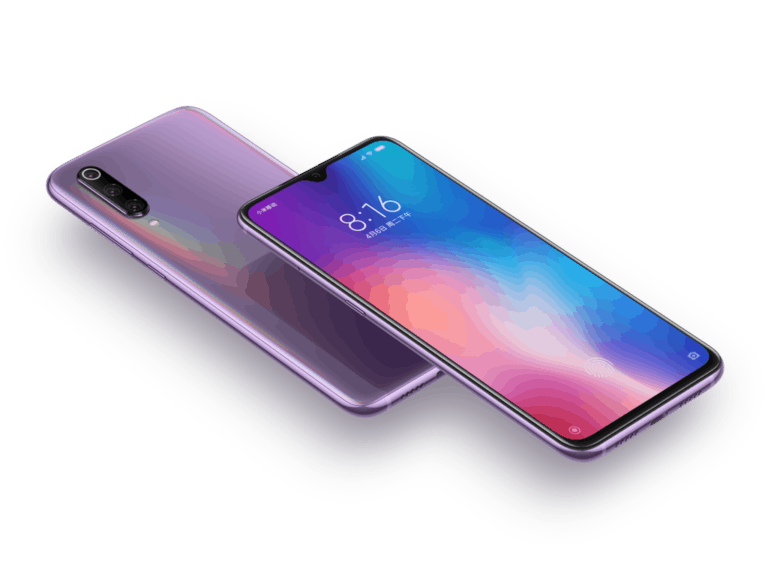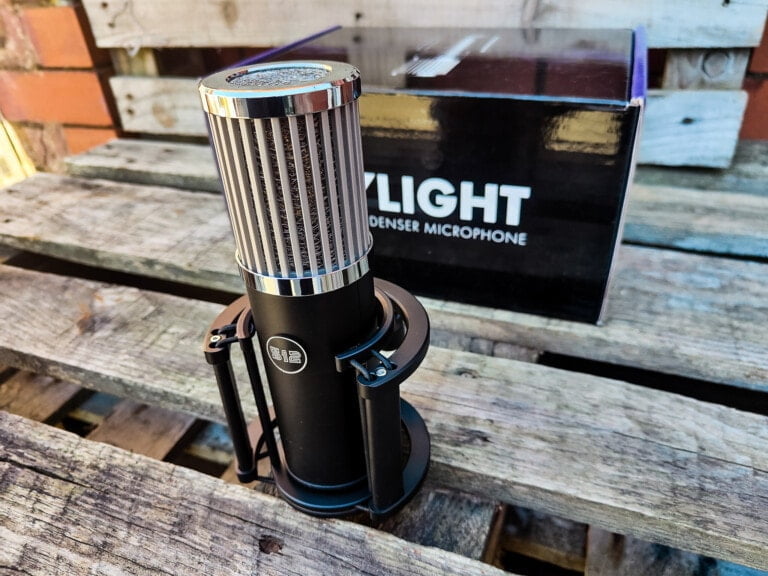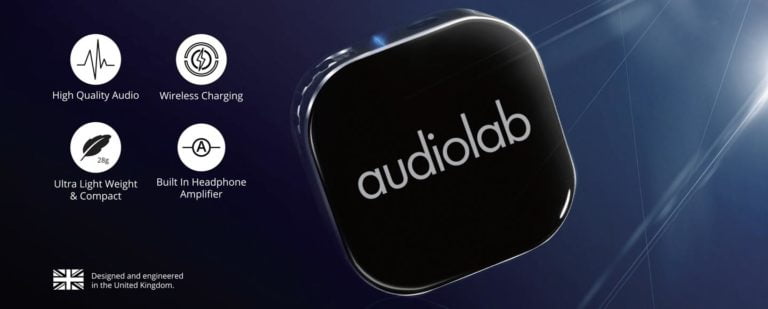Any links to online stores should be assumed to be affiliates. The company or PR agency provides all or most review samples. They have no control over my content, and I provide my honest opinion.
This article was originally published on Make the Sound Better. While I have updated most of the articles that have been transferred over, this article is mostly unedited.
Why Mic Frequency Range Matters
When it comes to audio quality, mic frequency range is one of the most important factors to consider. Simply put, the frequency range of a microphone refers to the range of frequencies that it can capture and transmit, which ultimately determines the quality and clarity of the sound it produces. In this article, we will explore the top 10 mic frequency ranges for crisp audio, debunk common myths, and provide tips on how to choose the right mic frequency range for your needs.
The Anatomy of Mic Frequency Range
Before diving into the top mic frequency ranges, it’s important to understand the basic anatomy of mic frequency range. Frequency range is measured in hertz (Hz) and refers to the range of frequencies that a microphone can capture and transmit. The human ear can hear frequencies ranging from 20 Hz to 20,000 Hz, so a microphone’s frequency range should ideally cover this entire range. However, not all microphones are created equal and some may have a more limited frequency range than others.
The Top 10 Mic Frequency Ranges Explained
Here are the top 10 mic frequency ranges explained, listed in order from lowest to highest:
- Sub-Bass (20-60 Hz): This frequency range is typically felt more than heard and is often used for creating a deep, rumbling bass sound in music production.
- Bass (60-250 Hz): This range is responsible for the warmth and fullness of sound and is often emphasized in vocals and instruments such as the bass guitar.
- Low-Midrange (250-500 Hz): This range adds body and thickness to the sound and is important for creating a natural and balanced tone.
- Midrange (500-2,000 Hz): This range is where most of the vocal frequencies lie and is crucial for clarity and intelligibility in spoken word and singing.
- Upper-Midrange (2,000-4,000 Hz): This range adds presence and clarity to the sound and is important for creating a sense of space and depth.
- Presence (4,000-6,000 Hz): This range is responsible for the brightness and clarity of the sound and is important for creating a crisp, clear sound.
- Brilliance (6,000-8,000 Hz): This range adds sparkle and sheen to the sound and is often used to enhance the high-end frequencies of vocals and instruments.
- Air (8,000-10,000 Hz): This range adds a sense of openness and airiness to the sound and is important for creating a spacious and natural sound.
- Presence/Brilliance (10,000-15,000 Hz): This range is often used to add definition and detail to the sound and is important for creating a clear and articulated sound.
- Brilliance/Sibilance (15,000-20,000 Hz): This range adds a sense of airiness and sizzle to the sound and is important for creating a bright and lively sound.
Mic Frequency Range vs. Audio Quality
The mic frequency range plays a crucial role in determining the audio quality of a recording. A mic with a wider frequency range can capture more detailed and nuanced sound, resulting in a higher quality recording. On the other hand, a mic with a limited frequency range may struggle to capture certain frequencies, resulting in a less accurate and less detailed recording.
To demonstrate the importance of mic frequency range, let’s take a look at a comparative table of three microphones with different frequency ranges:
| Microphone | Frequency Range | Audio Quality |
|---|---|---|
| Mic A | 20 Hz – 20 kHz | Excellent |
| Mic B | 80 Hz – 15 kHz | Good |
| Mic C | 100 Hz – 8 kHz | Poor |
As you can see from the table, Mic A with a frequency range of 20 Hz to 20 kHz has the widest frequency range and produces the highest quality audio. Mic B with a limited frequency range produces good quality audio, but is not as detailed as Mic A. Mic C, with the most limited frequency range, produces poor quality audio and is not suitable for professional recording.
How to Choose the Right Mic Frequency Range
Choosing the right mic frequency range depends on your specific needs and the type of recording you intend to make. Here are some factors to consider when choosing a mic frequency range:
- Type of Recording: The type of recording you intend to make will determine the ideal frequency range for your microphone. For example, if you’re recording vocals, a mic with a wide frequency range that emphasizes the midrange frequencies would be ideal.
- Voice Type: The frequency range of a microphone should also match the natural frequency range of the voice being recorded. For example, a mic that emphasizes the low-midrange frequencies may not be ideal for a singer with a higher-pitched voice.
- Budget: Microphones with wider frequency ranges tend to be more expensive than those with more limited ranges. Consider your budget when choosing a mic frequency range.
- Environment: The environment in which you will be recording can also affect your choice of mic frequency range. For example, if you will be recording in a noisy environment, a mic with a more limited frequency range that doesn’t pick up as much background noise may be ideal.
Common Mic Frequency Range Myths Debunked
There are several common myths surrounding mic frequency range that are worth debunking:
- Myth: The wider the frequency range, the better the microphone. While a wider frequency range can certainly result in a higher quality recording, it’s not the only factor to consider when choosing a microphone. Other factors such as sensitivity, impedance, and noise level should also be taken into account.
- Myth: More expensive microphones always have wider frequency ranges. While more expensive microphones may have wider frequency ranges, this is not always the case. The price of a microphone is influenced by many factors, including brand name, build quality, and features.
- Myth: The frequency range of a microphone cannot be changed. While the frequency range of a microphone is largely determined by its design, it can be influenced by the use of EQ and other post-processing techniques.
Mic Frequency Range and Voice Type Matching
Matching the mic frequency range to the natural frequency range of the voice being recorded is crucial for achieving a natural and balanced sound. Here are some general guidelines for matching mic frequency range to voice type:
- Deep Voices: Microphones that emphasize the low-midrange and bass frequencies are ideal for recording deep voices.
- Mid-Range Voices: Microphones that emphasize the midrange frequencies are ideal for recording mid-range voices.
- High-Pitched Voices: Microphones that emphasize the upper-midrange and presence frequencies are ideal for recording high-pitched voices.
Conclusion: Get Crisp Audio with the Right Mic Frequency Range
Mic frequency range is a crucial factor to consider when choosing a microphone for any type of recording. By understanding the anatomy of mic frequency range and choosing the right frequency range for your specific needs, you can achieve crisp, clear, and high-quality sound recordings. Keep in mind that mic frequency range is just one factor to consider when choosing a microphone, so be sure to also take into account other factors such as sensitivity, impedance, and noise level when making your final decision. With the right mic and the right frequency range, you can take your audio recordings to the next level.
I am James, a UK-based tech enthusiast and the Editor and Owner of Mighty Gadget, which I’ve proudly run since 2007. Passionate about all things technology, my expertise spans from computers and networking to mobile, wearables, and smart home devices.
As a fitness fanatic who loves running and cycling, I also have a keen interest in fitness-related technology, and I take every opportunity to cover this niche on my blog. My diverse interests allow me to bring a unique perspective to tech blogging, merging lifestyle, fitness, and the latest tech trends.
In my academic pursuits, I earned a BSc in Information Systems Design from UCLAN, before advancing my learning with a Master’s Degree in Computing. This advanced study also included Cisco CCNA accreditation, further demonstrating my commitment to understanding and staying ahead of the technology curve.
I’m proud to share that Vuelio has consistently ranked Mighty Gadget as one of the top technology blogs in the UK. With my dedication to technology and drive to share my insights, I aim to continue providing my readers with engaging and informative content.







